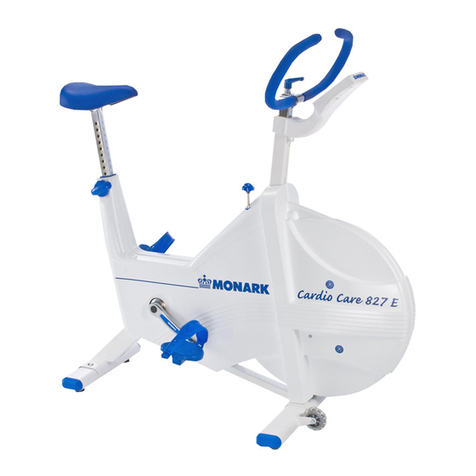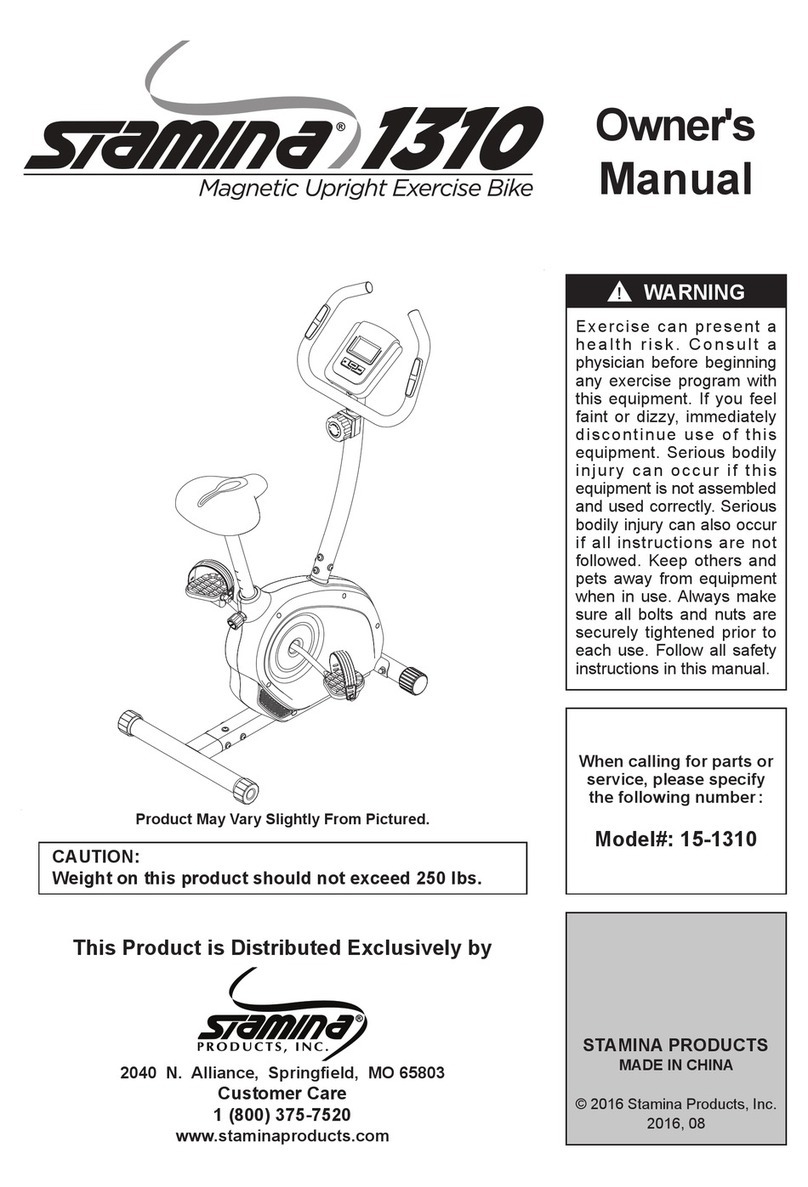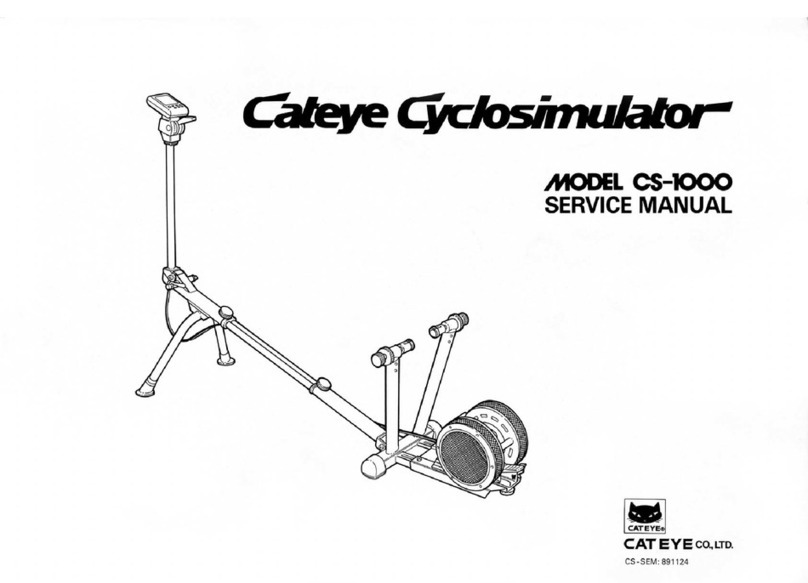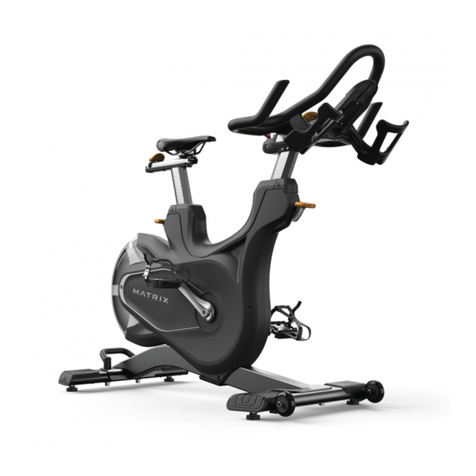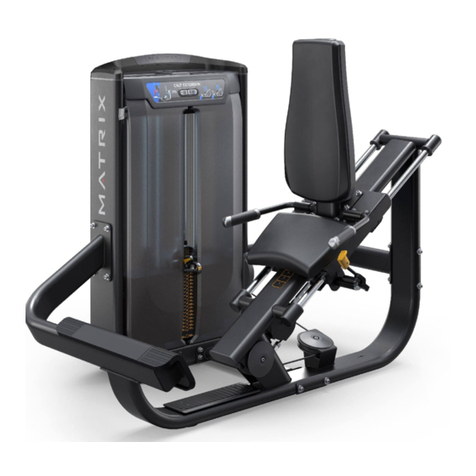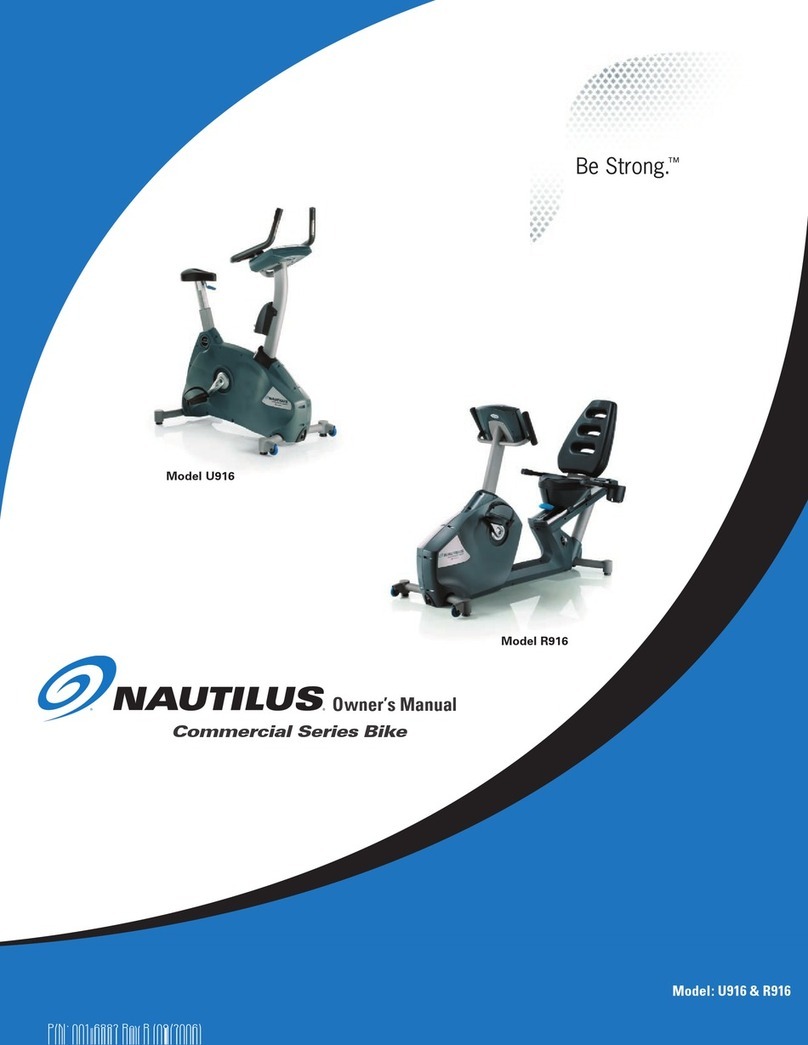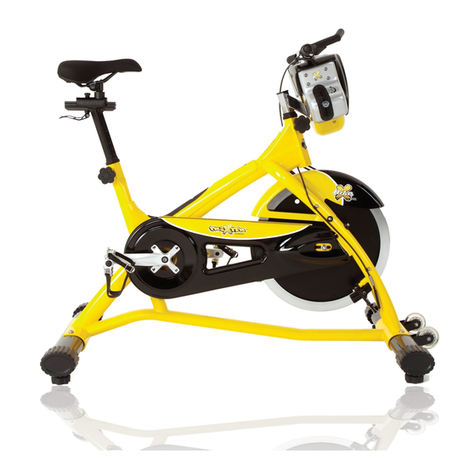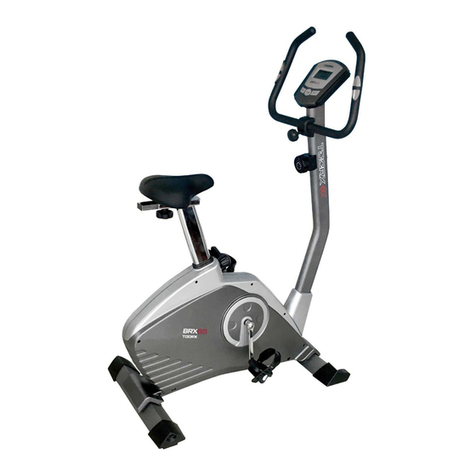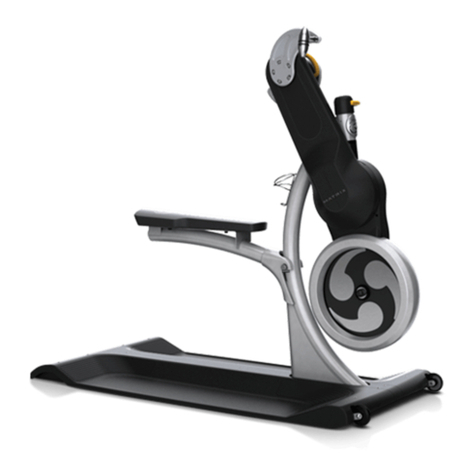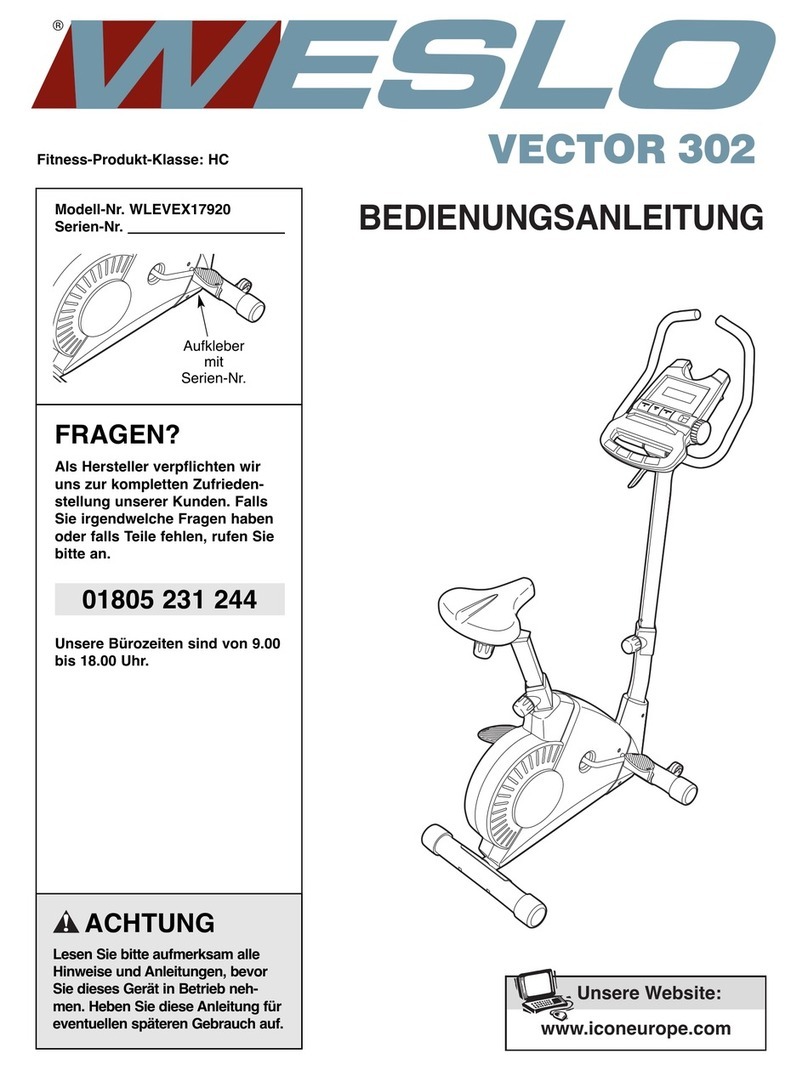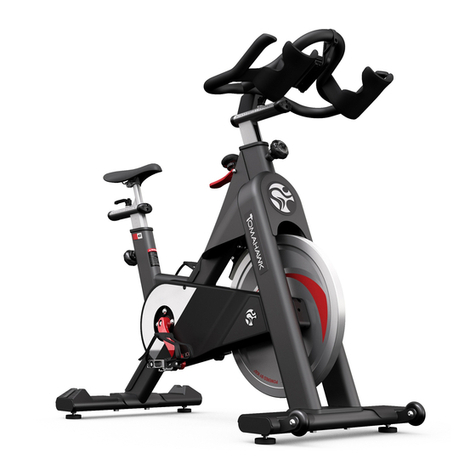The cycle tune-up must be performed at initial installation of the indoor cycle for optimal performance and
longevity. Please read and follow all instructions below. If the indoor cycle is not installed and tuned as
described, components may wear excessively and the indoor cycle may become damaged. If you have
Note: Some maintenance procedures require acid-, silicone- and solvent free spray lubricant (for
example BRUNOX), and White Lithium grease.
1. Make sure that the indoor cycle is level. If the indoor cycle rocks on the oor, turn the
leveling feet underneath the front and/or rear stabilizer until the rocking motion is eliminated.
2. Verify Emergency brake function to assure that emergency brake functions correctly.
3. Brake pad calibration: Turn resistance knob counterclockwise as far as possible (minimum bra-
king effect), verify that there is a slight separation of the brake pad from ywheel. Brake pad
should barely touch the ywheel when resistance knob is turned counter-clockwise as far as it
can go.
4. Apply spray lubricant to the brake pad using the lubrication holes on the plastic part or the brake
pad and externally on the felt pad. Make sure brake pad is thoroughly soaked from end to end
with lubricant spray. Then, wipe the excess off from the ywheel.
* Best Practice: Use a rellable spray bottle lled with non-aerosol acid-, silicone- and solvent
free spray lubricant purchased by the gallon (3.7 L) at the local hardware store.
5. Apply Lithium grease to the threads on the lower end of the brake rod. First, turn the Resistance
knob clockwise until it stops. Apply a small amount of white lithium grease to the threads on the
brake rod above the two lock nuts. Then, turn the resistance knob counter-clockwise until it stops.
6. Apply Lithium grease on the metal threads of all the adjustment knobs.
7. Verify four (4) Allen nuts on RS pulley for tightness. If loose, apply LocTite Threadlocker Blue-242
and retighten.
8. Verify R and L crank arm Allen bolts for tightness. If loose, apply LocTite Threadlocker Blue-242
and retighten.
9. Verify belt tension. Check if belt drive is rmly tightened and does not slip while riding under resis-
tance load. In case that the belt slips, proceed using the adjustment technique as described on
page (17). Please note that a belt drive gear never shows slack. In case of adjustment do
not apply too much tension.
10. Wipe down bike frame with rag moistened with solvent free spray lubricant
11. Some parts of the indoor cycle may become loose during shipment. Check crank arms, check all
exposed screws, bolts, and nuts, and make sure that they are properly tightened.
Customer Service
1. Provide basic maintenance instructions to client and direct them to detailed maintenance instruc-
tions (page 13-19).
2. Sign-off sheet provided to client to conrm explanation of maintenance procedures/manual and
verication of condition of bikes
Version 1.0 2013 IC-MXSB-01 Copyright by Indoorcycling Group GmbH 2013 | www.indoorcycling.com ENG 8
INITIAL INSTALL CHECKS

